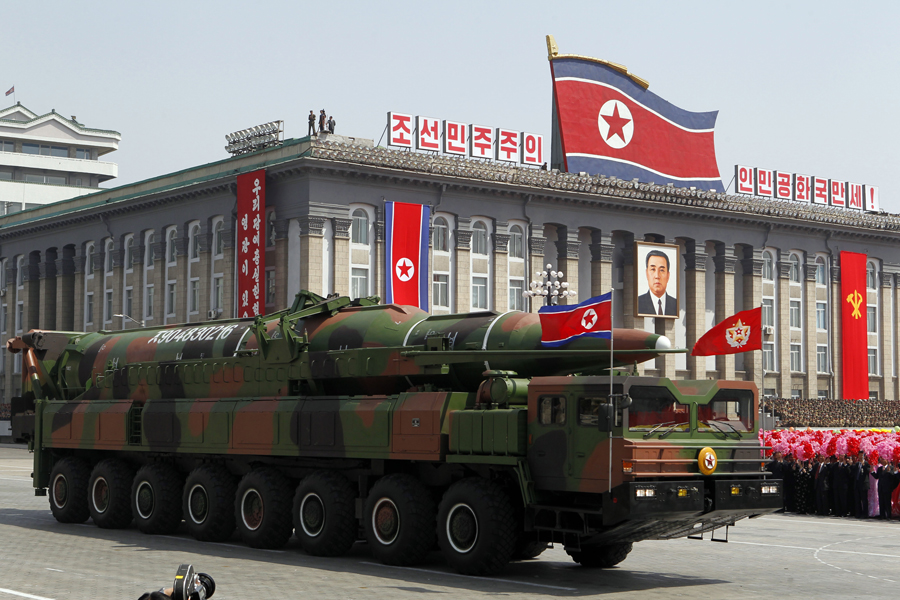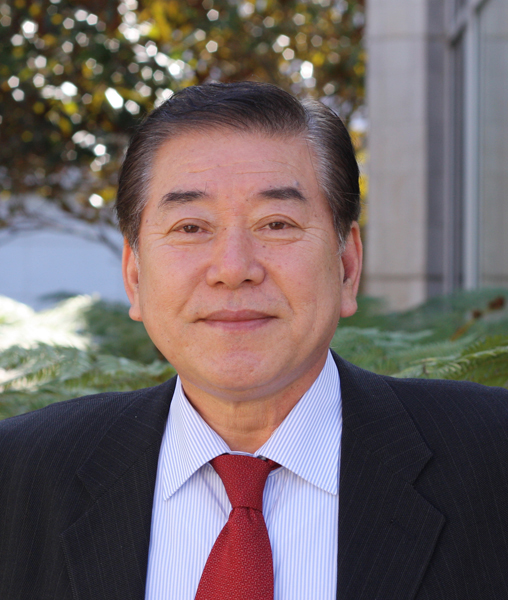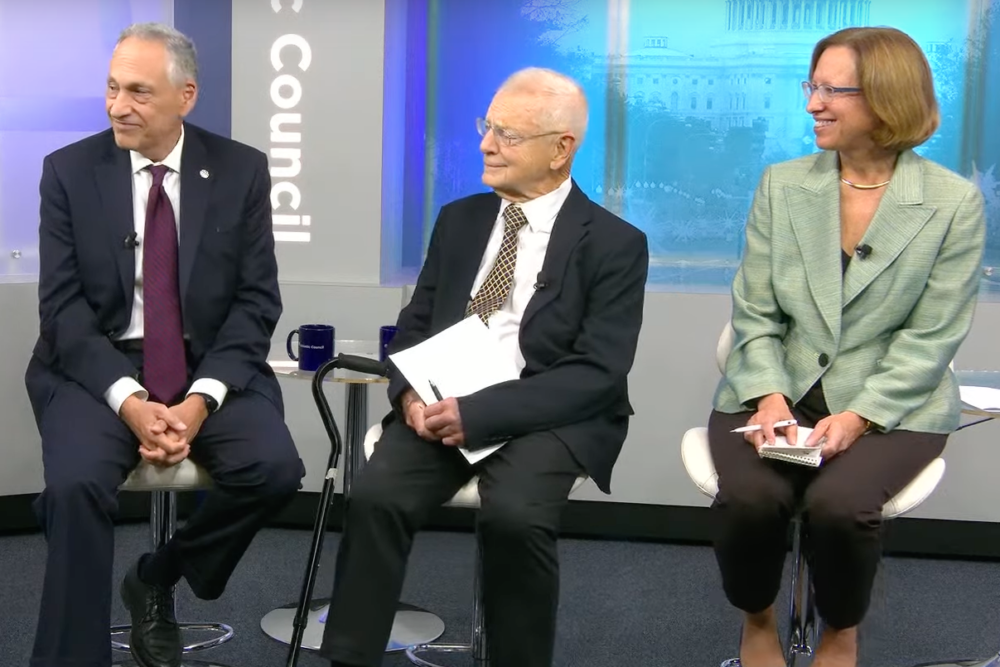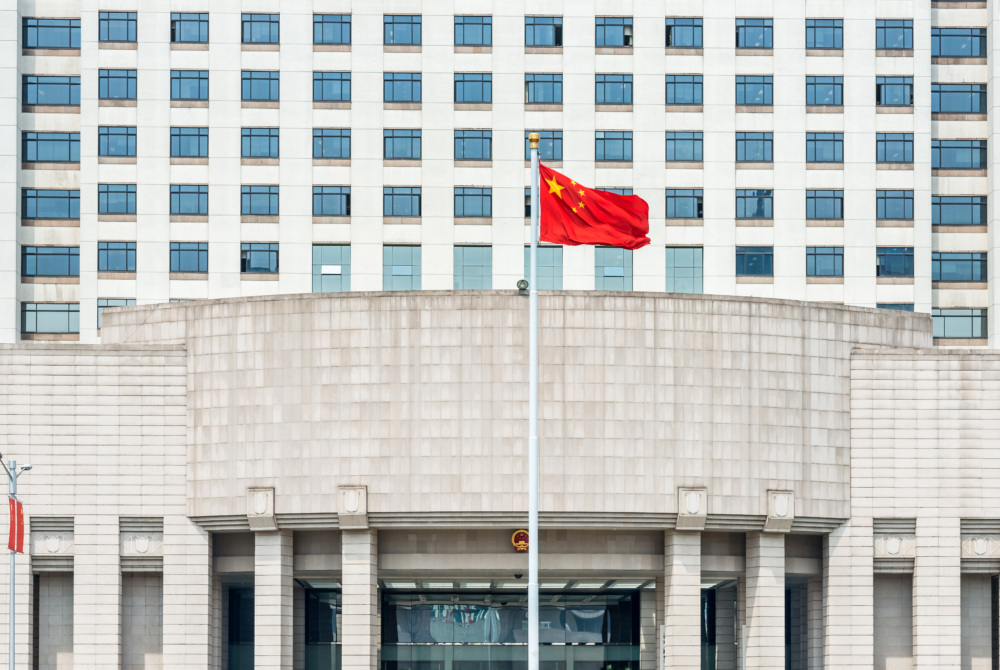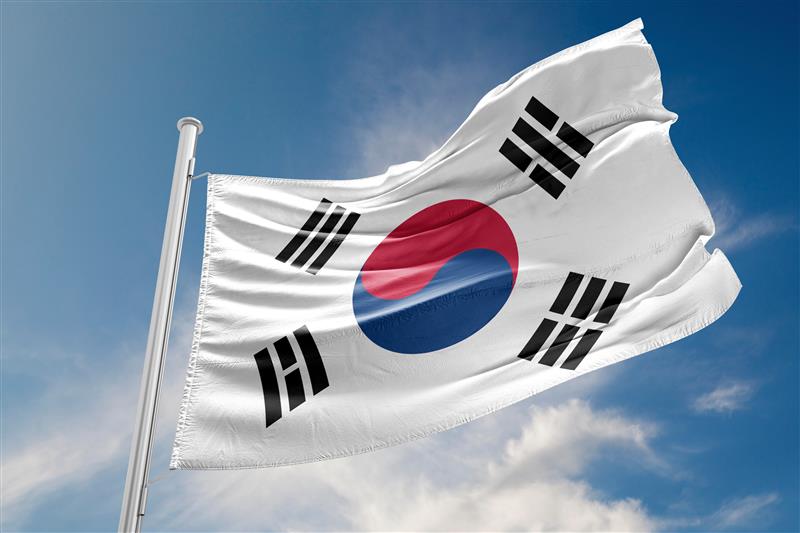
Isabelle Williams
Senior Director, Global Nuclear Policy Program
Atomic Pulse
In his first trip as U.S. Secretary of Defense, Gen. James Mattis last week
visited U.S. allies South Korea and Japan, and both governments were eager to
discuss the U.S. role in Asia under the new Trump Administration. The visit
came amid rising concerns about North Korea and speculation
that its nuclear capabilities are more advanced than previously
believed. Mattis reassured Seoul and Tokyo that U.S. defense commitments in
East Asia were “ironclad” and promised an “effective and overwhelming response”
should North Korea launch a nuclear attack.
Here, in his first interview for Atomic Pulse, Professor Chung-in Moon,
co-convener of NTI’s partner, the Asia-Pacific Leadership Network (APLN), talks
about priorities for the APLN, the threat posed by North Korea and why a
serious attempt at dialogue is the best course of action to reduce threats.
What are the
top priorities for the Asia-Pacific Leadership Network?
The APLN aims to inform and energize public
opinion, including high-level policymakers, to take seriously the very real
threats posed by nuclear weapons. Current top priorities include the North
Korean nuclear problem, a potential nuclear domino situation in the Northeast,
growing nuclear and conventional tension between India and Pakistan, nuclear
weapon free zones across the Asia-Pacific, preservation of the NPT regime, and
nuclear terrorism.
How do you
think the new U.S. administration will change U.S. policies toward Asia, and
how will that impact the region?
It’s too early to
conclude the nature and direction of President Trump’s policy on Asia, but it
appears likely that the overall strategic landscape in Asia-Pacific will
drastically change during the Trump administration. His handling of China
(questioning the ‘One China’ policy and the dispute over the South China Sea)
could intensify U.S.-China confrontation, which could in turn resurrect and
strengthen the Obama administration’s ‘pivot to Asia’ but under a different
label. In fact, Defense Secretary James Mattis’ surprising visit to Seoul and
Tokyo last week can be seen as a signal to consolidate old alliance politics to
counter-balance China’s rise.
However, Trump could also overhaul the U.S.-led
alliance architecture in Northeast Asia. During the campaign, he repeatedly
stressed that Japan and South Korea have been free riders in alliance relations
and that he will reduce or withdraw American troops stationed in those
countries unless they pay an increased share of joint defense burdens and costs.
In addition, the Trump administration could deal a critical blow to the
existing liberal trade order in the region. The U.S. has already withdrawn from
the Trans-Pacific Trade Partnership. Trump has also pledged to scrutinize bilateral
trade relations with countries in the region and is likely to amend or discard
the KORUS free trade arrangement, while imposing severe import restrictions on
China, Japan, and South Korea, which would not only precipitate tense trade
disputes, but also undercut American leadership in regional trade regime.
How serious is
the threat posed by North Korea?
Pyongyang poses serious nuclear threats to
South Korea and Japan, if not the U.S. mainland, as well as American soldiers
and military facilities stationed in Japan and South Korea. In addition, a
nuclear North Korea, if unchecked, can not only trigger a nuclear domino
phenomenon in Northeast Asia, but also poses a grave threat to global security
through the proliferation of its nuclear materials and weapons.
International pressures and sanctions
notwithstanding, Kim Jong Un has made it clear that he will not jettison the Byungjin
(simultaneous pursuit of economic development and nuclear weapons). Thus,
nuclear and missile development will continue as his policy priorities. North
Korean leadership could temporarily halt the nuclear and missile development but
is not likely to return to a negotiation table with denuclearization as a
precondition.
How
sophisticated is North Korea’s nuclear program?
I believe North Korea has significantly advanced
its nuclear and missile program. According to a recent survey by Sigfried
Hecker, a renowned nuclear weapons expert, North Korea might have secured
sufficient fissile materials for four to eight plutonium weapons and six to 20
HEU weapons with an annual production capacity of at most one plutonium weapon
and possibly six HEU weapons. This is an alarming development. In addition,
Pyongyang announced in January 2016 that it tested a hydrogen bomb (although
its reliability is still being questioned). This signifies a deeper dimension
of sophistication regarding the diversification of its nuclear weapons
capability.
North Korea is known to have developed an
array of delivery capability ranging from short-range Scud B and C (range
300km-500km) and Nodong (range 1,000km) to Musudan intermediate range missile
(3,000km). The Scud B and C, as well as Nodong missiles, are currently
operational, but the operational effectiveness of Musudan has been questioned
because four out of its five previous test launchings have so far failed. Kim
Jong Un recently stated that North Korea is in the final stage of developing
ICBMs. However, most experts question this. More worrisome is North Korea’s
acquisition of Submarine Launched Ballistic Missiles, which some believe would
be a game changer.
North Korea has also conducted five nuclear
tests of which four were partially or generally successful. Pyongyang is likely
to engage in more nuclear testing in order to develop its capability to miniaturize
nuclear devices. In fact, the North publicly announced it has succeeded in
miniaturizing nuclear warheads, although most experts also doubt this.
How would you advise the new U.S. administration
deal with North Korea?
Pressure and sanctions in close cooperation with American allies and
the U.N. should be an immediate reaction. William Perry in his recent column in
The Washington Post urged the Trump administration to “talk first, get
tough later.” I agree with him. I believe engagement, dialogue, and
negotiations with North Korea are still the most credible way of handling
Pyongyang. Obama’s strategic patience policy failed simply because pressure
and sanctions outweighed engagement and dialogue, which in turn demolished the
foundation for mutual trust building. Nevertheless, past failure should not
serve as an excuse for not engaging with the North.
President Trump should open channels of communication with the North
and dispatch a high-powered special envoy to Pyongyang. He also needs to have
an inter-subjective understanding of North Korea, which is essential to
trust-building, and to avoid the folly of demonizing the North. And incentives
and disincentives should be flexibly presented. As Sam Nunn aptly points out in
his statement to Congress, President Trump should seek “a unified policy
approach to North Korea from our allies, from China, from Russia and the
international community, including the United Nations.” Finally, he should send
a clear and optimistic message to North Korea and the world that the North
Korean nuclear quagmire can be peacefully resolved. Trump should apply ideas
embodied in his book ‘The Art of Deal’ in dealing with Pyongyang.
Could a preemptive strike to North Korea be a
viable option to deal with North Korea’s nuclear crisis?
No, because it would not necessarily achieve the desired military and
political objectives. Destroying North Korea’s nuclear assets (nuclear
facilities, materials, and warheads) that are concealed in various places, as
well as its mobile missile-launching sites, will not be easy. Given the heavily
fortified command-and-control system, targeting and decapitating the country’s
political leadership will be virtually impossible. Meanwhile, North Korea’s
massive retaliatory capabilities and subsequent escalation of military conflict
would entail grave human casualties in the south.
Removing the North Korean leader will also be extremely difficult, and
even if he is removed, another dictator is likely to take over. The same can be
said of regime change. The collapse of the Kim Jong Un regime does not
necessarily mean the end of DPRK as a sovereign state. The military or
military-party collective leadership can easily replace the Kim regime, and the
would-be new leadership is likely to reveal the same behavior. Mass uprising
could bring about an abrupt end to the regime, but at present seems very
unlikely.
Have sanctions against North Korea been effective?
Despite the adoption of UN Security Council Resolution 2270, North
Korea shows no signs of compliance. On the contrary, its behavior has become
more defiant, conducting a fifth nuclear test and additional missile tests. Since
North Korea is still a closed society and very much accustomed to sanctions, an
Iranian model of comprehensive sanctions would not work effectively.
Given that over 90% of North Korea’s trade is with China, international
sanctions cannot be effective without Beijing’s full cooperation. China has
been complying with measures mandated by UN Security Council resolutions but
would not want to go ahead with any sanctions that would undermine stability in
the North and lead to regime collapse. At the same time, Beijing is unlikely to
comply with a secondary boycott which U.S. Congress is currently discussing.
Will the US THAAD missile defense shield help slow
North Korea’s nuclear and missile development? What have been the reactions to
THAAD in South Korea?
THAAD will not help slow
North Korea’s nuclear and missile development. It is a defensive system without
any deterrence or offensive defense functions. It cannot compel the North to
change its behavior. On the contrary, its deployment will make the North more
provocative and seek ways to avoid or defy it more actively than ever.
South Korea has been divided over the issue of THAAD. A poll from late
December showed 61 percent of South Korean respondents either opposing its
deployment or preferring to delay deployment until the new government is
inaugurated.
Conservative forces led by the ruling Saenuri Party have argued that
the THAAD deployment is the right decision. They regard it is an unavoidable
self-defense measure to cope with nuclear and missile threats from North Korea
and a concrete sign of the U.S. alliance commitment. Meanwhile, liberal and progressive
forces led by opposition parties have taken a much tougher stance calling for
the immediate relinquishment of the decision. This faction argues that THAAD
has limited military utility and believes its deployment will not only harm
relations with China, South Korea’s vital economic partner, but also pit China
and Russia against South Korea while strengthening their ties with North Korea.
Opposition groups see the deployment of THAAD as a prelude to Seoul’s joining a
U.S.-led theater missile defense system, which could in turn revive a new Cold
War structure in Northeast Asia. Given such formidable domestic political
opposition, the scheduled THAAD deployment might not be smooth.
What is China’s approach to dealing with North
Korea?
China is an important player in the North Korean endgame not only
because it is a legal party to the Korean armistice agreement, but also because
Pyongyang depends heavily on Beijing in the economic and even security domain.
Beijing’s behavior will be guided by its three core objectives on the Korean
peninsula: peace and stability on the Korean peninsula, denuclearization of the
Korean peninsula, and resolution of pending issues through dialogue and
negotiation. China will play a proactive and cooperative role when and if those
three objectives are satisfied. But Beijing will be extremely defiant over
American moves to precipitate escalation of military conflict or to undermine
stability by fostering regime collapse in the North.
If the United States were to suspend its opposition
to a nuclear Japan or South Korea would this enhance security for these
countries and the region?
No, such suspension would further complicate the security dilemma in
Northeast Asia by not only precipitating a nuclear domino syndrome, but also
deepening strategic distrust among countries in the region. Moreover, South
Korea, Japan, and Taiwan will find an easy excuse to develop nuclear weapons if
the U.S. lifts its opposition. They have
technology and capital to do so.
A growing number of analysts in South Korea argue that Seoul should
develop an indigenous nuclear arms program to deal with Pyongyang’s nuclear
threat and urge the government to go nuclear if the United States does not
redeploy its tactical nuclear weapons in South Korea. But as soon as South
Korea declares its intention to pursue this course it will face strong
headwinds. The nation’s nuclear power industry would be ruined, as would the
country’s traditional alliance with the United States. The South Korean economy
would risk being dealt international sanctions that could send it into a
tailspin. Moreover, South Korea going nuclear could be a tipping point that
leads other countries in Northeast Asia, namely Japan, to develop their own
nuclear arsenals.
Would the U.S. benefit from a nuclear armed Japan
or South Korea?
A nuclear armed Northeast Asia will not benefit the United States.
Judged on the overall public sentiments in Washington, D.C., it will be extremely
difficult for the U.S. to maintain alliances with a nuclear Japan and/or South
Korea. Such a development will likely lead to a loss of American allies in the
region. More importantly, the U.S. will lose its ‘hegemonic’ influence over the
region. Japan and South Korea armed with nuclear weapons are not likely to
comply with American demands. They would comply only when extended deterrence
and American provision of nuclear umbrella remain valid and operational.
How could a diplomatic approach to North Korea be
carried out?
First, the diplomatic approach must be practical and realistic. Goals
for negotiations must be adjusted to changing circumstances. We must face the
reality that we cannot make North Korea completely dismantle its nuclear
weapons and facilities in the short term. Instead, we should seek a moratorium
on its nuclear program to prevent further production of nuclear materials.
Pyongyang repeatedly said it would cease nuclear activities if terms were met.
In this regard, Siegfried Hecker’s step-by-step approach of “freeze, roll-back,
and verifiably dismantle” might provide us with a viable exit strategy.
Practical ways to resolve the North Korean nuclear conundrum might be found in
existing agreements that emerged from the six-party talks.
Second, frankness, two-way understanding, and trust-building should be
the basic guiding principles of a diplomatic approach. We must speak our minds
and also hear out Pyongyang in order to find mutually acceptable solutions.
Being deaf to the North and insisting on unilateral preconditions won’t lead us
to an exit. Portraying the North as an untrustworthy rogue state will only
reinforce the perception that relations are asymmetrical, hindering meaningful
dialogue and negotiation.
Third, flexible negotiations should be another guideline. We must put
all possible cards on the table, including a temporary halt to joint South
Korea–U.S. military drills, replacement of armistice with a peace treaty,
allowance of North Korea’s peaceful use of atomic energy and space/satellite
program, and normalization of diplomatic relations between North Korea and the
United States. We must not exclude these options just because they are being
demanded by Pyongyang. While addressing issues through dialogue, we could probe
Pyongyang’s intentions and demand responsibility for any breach of faith.
Finally, a mechanism for dialogue should be restored. In this regard,
the six-party talks are still the best venue for negotiation. Concerned parties
can have bilateral, trilateral, four-party, and five-party talks within the six-party
framework. In addition, the September 19 joint statement is still the best
diplomatic document for denuclearizing North Korea. Deliberating on alternative
mechanisms for dialogue and negotiation will be time-consuming.
Sign up for our newsletter to get the latest on nuclear and biological threats.
Lynn Rusten, vice president of NTI’s Global Nuclear Policy Program, shares her reaction to the 2023 Strategic Posture Report during a panel event at the Atlantic Council.
Amid uncertainty around China’s expanding nuclear program and silence from Beijing about the intent behind the build-up, a new report offers details about China’s nuclear program that suggest significant implications for U.S. and global security.
When it comes to nuclear weapons and the Korean Peninsula, nearly all the attention goes to North Korea, but a public debate is heating up south of the demilitarized zone, with some officials in South Korea asking: Should Seoul pursue a nuclear weapons program, too?
